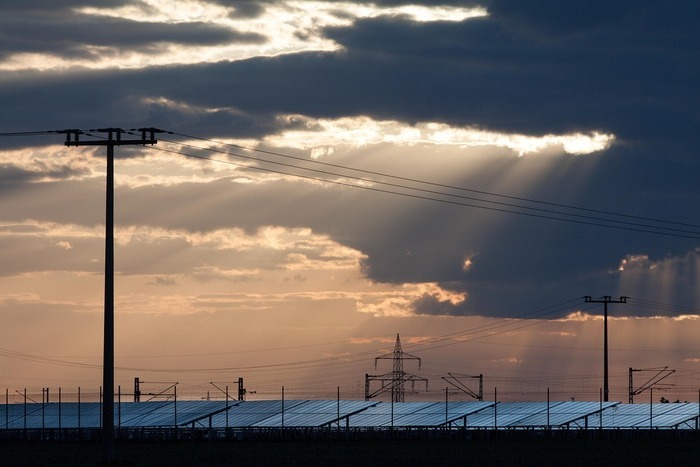India is on track to add over 45 GW during the fiscal year 2026, according to a new report by SBICAPS. The country installed 18 GW of solar power capacity in the first five months of FY 2026, PV Magazine reported.
Rooftop and open-access solar (aside from utility scale solar) have grown: Over 20% of the new solar additions now comprise rooftop and off-grid systems, significantly higher than in the previous years, the outlet reported.
The latest cut of goods and services tax (GST) on solar equipment from 12% to 5%, will reduce installation and maintenance costs and catalyze the adoption of solar by residential, commercial, and industrial users.
On the manufacturing front, solar module capacity under ALMM-I (Approved List of Models and Manufacturers for modules) has crossed the 100 GW, SBICAPS report said. .
India opens anti-dumping probe against solar component imports from China
The Commerce Ministry’s wing DGTR initiated an anti-dumping probe into the import of a solar component and mobile covers from China, following complaints by RenewSys India and All India Mobile Cover Manufacturer Association, the ET reported.
The applicant claimed that the industry is impacted due to the dumped imports of “Solar Encapsulants, excluding EVA Encapsulants” from China. The item is used in the manufacturing of solar PV modules.
If it is established that the dumping has caused material injury to domestic players, the DGTR would recommend the imposition of the levy on imports, the newspaper added.
The finance ministry takes the final decision to impose duties.Anti-dumping probes are conducted by countries to determine whether domestic industries have been hurt because of a surge in cheap imports.
India plans umbrella law for nuclear energy, special tribunal for disputes
As India plans to open a “highly restricted N power ecosystem” to private players, the country is mulling a single umbrella law for “all nuclear energy related issues, replacing existing laws,” the ET reported.
The newspaper added that “the Centre is also planning to set up a specialised tribunal to address all N-energy disputes besides a specialised authority on nuclear safety which will work in close coordination with the International Atomic Energy Agency” the newspaper said.
The proposed “architecture of nuclear energy allows private players in at least four to five areas including exploration and mining of atomic minerals to the critical area of fuel fabrication, all in the hands of the government right now,” the report said.
To assure corporate accountability centre plans “to create a special vertical”, “centred on nuclear safety and safeguards without will work in coordination with IAEA,” the outlet reported, adding that this special authority will be able to deploy inspectors across all nuclear reactors in the country who will keep account of each gram of nuclear fuel “from procurement to usage and disposal”. The Centre is also mulling to set up a special tribunal for all atomic energy related disputes.
Too few transmission lines? 50 GW of clean energy stranded due to transmission infra bottlenecks, says IEEFA
India’s clean energy transition is being hampered by transmission infrastructure struggling to keep pace with the growth of renewable energy generation, a new report by the Institute for Energy Economics and Financial Analysis (IEEFA) and JMK Research & Analytics said. The report revealed that over 50 gigawatts (GW) of renewable energy capacity is stranded nationwide as of June 2025, delaying projects, inflating costs, and undermining investor confidence, DTE reported.
In FY25, India added just 8,830 circuit kilometres (ckm) of transmission lines against a target of 15,253 ckm, reflecting a 42% shortfall, with inter-state additions hitting their lowest level in a decade. This widening gap between generation and evacuation has created systemic inefficiencies, the outlet added.
Analysis shows up to 71% of India’s interstate corridors operate below 30% utilisation, highlighting the mismatch between infrastructure and power flows.
China’s solar installations fall to near three-year low
A total of 7.4 gigawatts (GW) of solar capacity was added in China in August 2025, falling from 11GW in July and hitting the “lowest level in nearly three years”, according to data released by the National Energy Administration (NEA), Bloomberg reported. However, China’s solar module exports surged 9.5% year-on-year in August, reaching $2.4bn, the outlet says, citing customs data. Industry news outlet BJX News reported that, in the first eight months of the year, China’s total power generation capacity increased by 18% compared to the same period last year, with solar power and wind power capacity growing by 48% and 22%, respectively, during the same period.
About The Author
You may also like
Non-Fossil Fuels Generates One-Third of India’s Electricity in 2025
India on track to achieve 2030 clean energy target
Government Proposes for ALMM Expansion for Solar Backward Integration
China’s renewable energy expansion can fuel global energy transition: Report
India Needs 9 GW Charging Boost for E-Truck Transition: ICCT

